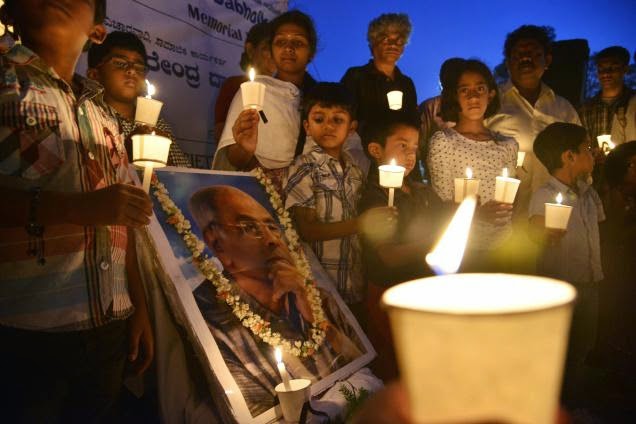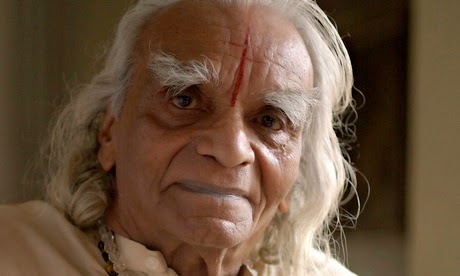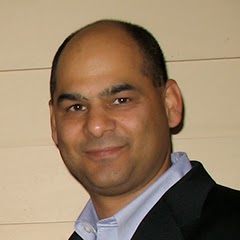magic — came posthumously…..One day
after he was killed, the Maharashtra government cleared an ordinance,
and in December 2013, a law against superstitious practices…..
….
To the untrained ear, Hamid Dhabolkar may sound a bit like Amar Akbar Anthony, an iconic Bollywood movie from 1977 (re-made as Ram Robert Rahim in Telegu and John Jaffer Janardhanan in Malayalam)- a khichdi that symbolizes all that is supposedly secular and syncretic about India.
In this case however, the reality outpaces fiction in depicting the truth.
Traditionally, for Hindus it was the gotra (not surname) that was the principal identifier. We are not fully informed on Maharashtrian practices but here is an interesting factoid: If the surname has a -kar suffix, the prefix usually suggests the ancestral village or locality of origin.
Thus for example, Revan-kar – a title from the Daivajna family with common ancestry in Goa (hence termed Gomantak, the ancient name of Goa). The ancestral village for Revankars is Rivona (probably a Portugese adaptation). Other Gomantak Daivajna titles include Karekar (from Karai), Pednekar (Pedne), Haldonkar (Haldona)….
Looking elsewhere, we find Aurangabadkar (Aurangabad in Western Maharashtra, the capital city of Aurangzeb, then Mughal vice-roy of Deccan, in 1653) and Amalnerkar (Amalner, 200 km due north of Nashik, in the north-west corner of Maharashtra where Azim Premji of Wipro spent his childhood, his dad was the proprietor of a local dalda factory). We are a fan of the astro-physicist Jayant Vishnu Narlikar and when we looked, sure enough, there is a village named Narli in Sangli district in south-western Maharashtra.
The family name of Dr Bhimrao Ramji Ambedkar is Sakpal (father: Ramji Maloji Sakpal) but the family took the surname
of Ambawadekar, after the village Ambawade (Ratnagiri district, south Maharashtra). In a brief autobiographical account, Baba-saheb tells us how a school
teacher (a Brahmin, who shared food with him) got the name to be shortened to
Ambedkar. Incidentally, there are allegations (see link below) that Ambedkar’s followers helped erase the contributions of his wife in his life (Savita Mai, a Brahmin), we wonder why?
……..
…..
Finally, we have Dr Narendra Achyut Dabholkar, who died for the cause of rationality one year ago in Pune (1 November 1945 – 20 August 2013). The Dabholkar title is from the Chitpavan family with common ancestry in the Konkan (hence termed Konkan-astha). Dabhol is a sea-side village on the Konkan sea-coast, 250 km south of Mumbai, near Chiplun, Maharashtra.
……..
We are not that familiar with Narendra as a first-name (Nara- man + Indra- king of Gods, thus a king amongst men), however the ones we know of are all formidable people (coincidence?). Narendrabhai Damodardas Modi is the current Prime Minister from Gujarat, while Narendra Nath Dutta was the pre-sanyasin name of Swami Vivekananda – the Bengali monk who established the monastic order named Ramakrishna Mission.
When it came to naming his son, Dabholkar made a curious (but meaningful) choice. Hamid Dabholkar is named after Hamid Umar Dalwai who was born in a Marathi-speaking Muslim family and whose ancestral village is Mirjoli, also near Chiplun (and not far from Dabhol). Dalwai was an early follower of the socialist mass-leader (Lok Nayak) Jai Prakash (JP) Narayan and then went on to establish himself as a renowned social reformer focused (primarily) on the advancement of Muslim women.
…………….
[ref. Wiki] Dalwai joined the Indian Socialist Party of Jai Prakash Narayan
in his early adulthood, but left it to devote himself to social reforms
in the Muslim community, especially regarding women’s rights.
Despite
living in a period when most people were staunchly religious and
orthodox, Hamid Dalwai was one among the few religiously secular people.
He strove towards a uniform civil code rather than religion specific
laws.
…
To create a platform for his views and work, he established the Muslim Satya-Shodhak Mandal
(Muslim Truth Seeking Society) in Pune on 22 March 1970. Through the
medium of this Society, Hamid worked towards reforming bad practices in
the Muslim community especially towards women. He helped many Muslim
women who were victimized to get justice.
He campaigned for encouraging
Muslims in acquiring education in the State language rather than Urdu,
their mother tongue. He also tried to make adoption an acceptable
practice in the Indian Muslim community.
….
He also established the Muslim Secular Society. He organised many
public meetings, gatherings, conventions and conferences to campaign for
better social practices. He was also a great Marathi litterateur. He
wrote Indhan (Fuel) – a novel, Laat (Wave) – a collection of short
stories and Muslim Politics in Secular India.
He used the medium of his writing for social reform.
……………
rationalist Narendra Dabholkar will gather near the Omkareshwar Temple
in Pune, where he was gunned down while on a morning walk
exactly a year ago.
Through street plays and songs, anti-superstition
campaigners will pay tribute to one of India’s foremost critics of
charlatan godmen and black magic.
to find his killers. Dr. Dabholkar’s daylight murder was initially
probed by the Congress-Nationalist Congress Party government in
Maharashtra and then transferred to the Central Bureau of Investigation
(CBI). So far it has yielded nothing.
claiming that the Pune police had resorted to planchet and tantriks to
trace the killers of the very man who had opposed such forces all his
life. The police have denied this and have even threatened a defamation
case.
the State’s inability to push the probe. “It is very distressing. We are
hurt and anguished. Are they trying to hide something and shield
someone?” asks his son Hamid Dabholkar. “There were groups which had
consistently been attacking and defaming him. They had filed many cases
against him. The investigation should have focussed on that,” he
emphasises.
Dr. Dabholkar was both fearless and relentless in his single-minded
drive against blind faith. He had braved vilification and death threats,
even physical attacks. His programs were routinely disrupted.
surrounded by mobs of followers. His targets included the influential
Sathya Sai Baba and his claims of producing “miracle ash” out of thin
air.
Maharaj at his own ashram. The godman, who claimed miracle cures for
ailments, arrived with 20,000 followers for a tense face-off with Dr.
Dabholkar and his group of 15. Narendra Maharaj finally conceded defeat
after a debate monitored by an anxious District Collector.
women into the Shani Shingnapur temple trust in Ahmednagar. The issue
finally ended up in court.
Hindu Janjagruti Samiti and Sanatan Sanstha. Both organisations have
vehemently denied any hand in his murder. However, the Sanatan Sanstha
proclaimed in an editorial just a day after the murder that it was
“God’s wish.” One member of the organisation was briefly questioned by
the police before being let off for lack of evidence.
magic — came posthumously, after a dogged 18-year struggle. One day
after he was killed, the Maharashtra government cleared an ordinance,
and in December 2013, a law against superstitious practices.
Inhuman, Evil and Aghori Practices and Black Magic Act, 2013 is a
diluted version of the ambitious draft Dr. Dabholkar had championed. It
does not allow third parties to lodge complaints. Only the affected
party has that right.
being registered across the State in less than a year. These include
cases against human sacrifice, the sexual exploitation of women by local
godmen and the fleecing of the gullible by promises of instant wealth.
However, the cases have mostly come to the Maharashtra Andhashraddha
Nirmoolan Samiti (MANS) set up by Dr. Dabholkar and then been registered
with the police.
says MANS working president Avinash Patil. The survival of the
organisation, founded nearly three decades ago, has been critical to
continuing his campaign.
the districts in the State, drawing on students and volunteers to propel
the battle against superstition. Even today, MANS has nearly 250
branches and 5,000 volunteers. “Sustaining the organisation was a
challenge. With his death we lost our security cover. But we have
survived and passed the test,” says Mr. Patil.
Dr. Dabholkar was well aware of the risks he faced by questioning
obscurantism in a country steeped in superstition. “In this movement,
even expressing a thought is sometimes a fight,” he would say. Indian
rationalists have long walked a vulnerable path, even though under our
“Fundamental Duties”, citizens are obliged to “develop a scientific
temper, humanism and the spirit of inquiry and reform.”
Whistle-blowers who have exposed corruption, now increasingly through
the Right to Information (RTI) Act, have been targeted, sometimes paying
with their lives.
2010. Last week the CBI filed a closure report in the case saying it had
not found evidence against any of those accused of his murder.
probe into his father’s killing, Hamid Dabholkar feels, fits into this
larger pattern.
“This is an issue which goes beyond my father. If voices which stand for
social causes are silenced and no action is taken against the
perpetrators, it is an attack on democracy,” he says. And on simple
rational thinking itself.
………
Link (1): dabholkar-dissent-and-democracy
Link (2): dr-ambedkar-and-brahmins
……
regards








